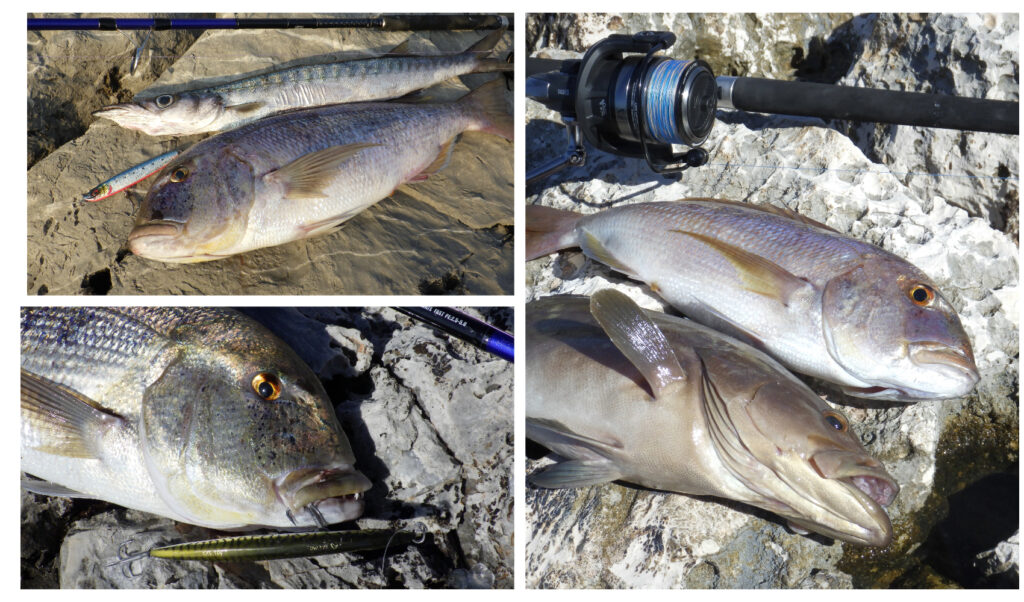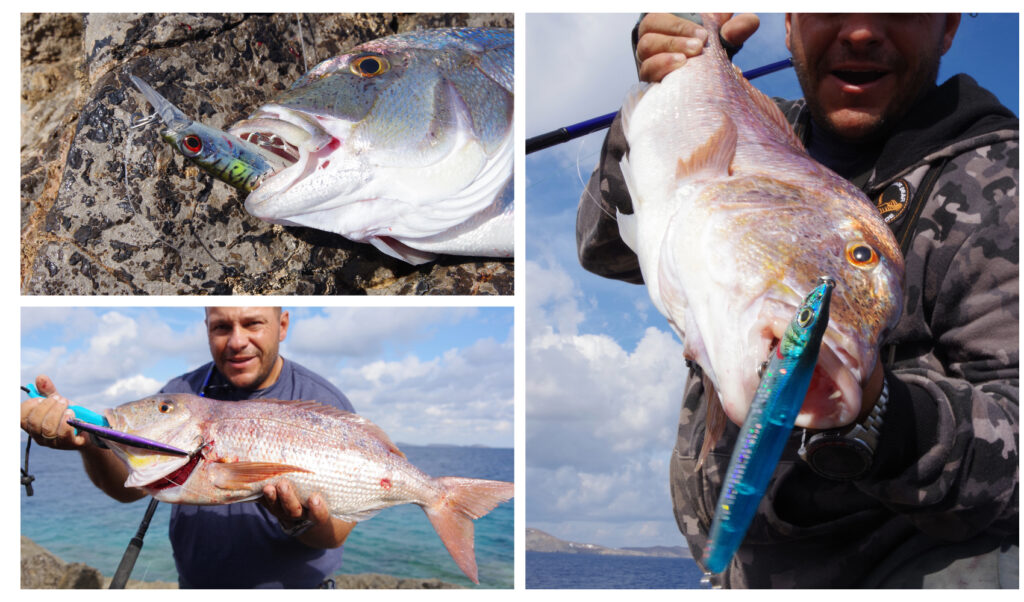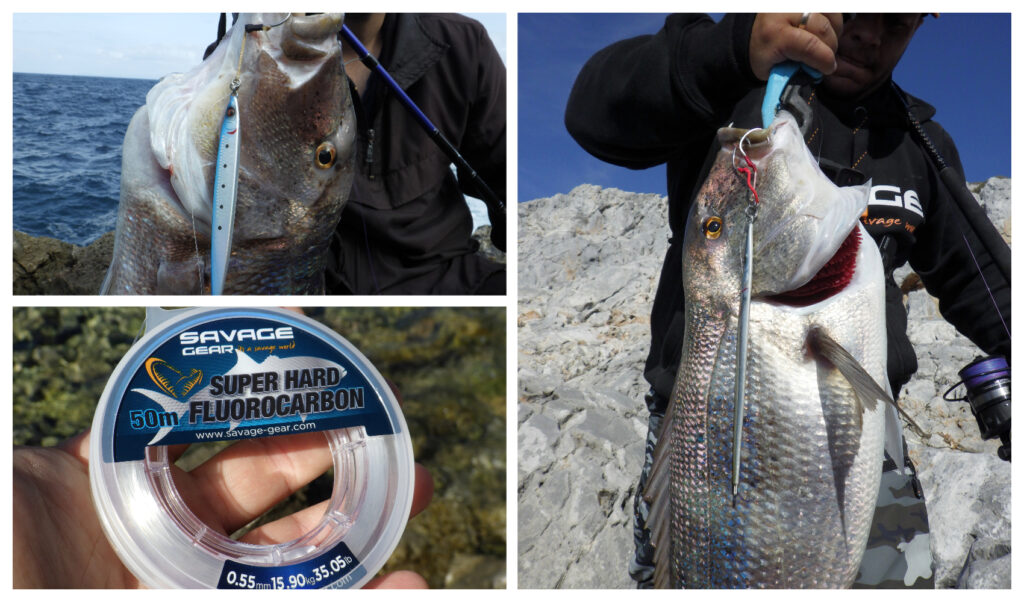The Ultimate Guide to Shore Jigging for Snappers (Dentex Dentex)

Shore jigging is an exhilarating and highly effective fishing technique that has gained popularity among anglers, particularly those targeting the impressive Common Snapper (Dentex Dentex). Known for their formidable strength and delectable flesh, Snappers are prized catches for both sport and culinary purposes. In this comprehensive guide, we’ll delve into the captivating world of shore jigging for Snappers, providing you with essential tips and insights to maximize your chances of success.

Understanding the Common Snapper
Dentex Dentex, commonly referred to as the Common Snapper, is a formidable predator inhabiting the warm waters of the Mediterranean Sea and other regions with similar climates. These powerful fish are characterized by their distinctive body shape, strong jaws filled with sharp teeth, and stunning silver, purple and pinkish hues. Dentex Dentex is known for its predatory nature and a preference for preying on various smaller fish, cephalopods and crustaceans, making them a top target for experienced anglers. To find these prey items, snappers patrol a wide range of habitats, including , sandy bottoms, fields of Posidonia and of course rocky bottoms. This fish has a big tolerance in different depths, and you can find the same fish at 80m depth in the morning, then at 10m in mid day, and then at 30m in the afternoon. It is a machine of war, made to hunt anything it can pursue effectively between the rocks, like cuttlefish or combers, or make strategic attacks in cooperation with other predators, like groupers or amberjacks, ambushing preys from bellow in mid waters, like sardines, bogas or squids. I have been catching Snappers with a cast, as deep as 70m and as shallow as 5 meters, and I must confess that Snappers are for me the “Achilles Tendon”. Theres no other fish I enjoy to hunt most than snappers, because of the challenge I have to face, in order to get them, the wide range of lures, I have to try, to find which is effective the specific day, and the walking I have to do, to find them! Don’t expect to get snappers in your areas port, or in convenient areas, that many people fish. Snapper hates stressed areas, and I have seen very good places turn to… dust after anglers find them and fish at them hard!

Shore Jigging Basics
Before you embark on a Snapper shore jigging adventure, it’s crucial to grasp the fundamental principles of this technique:
- Select the right Jigs: Invest in high-quality jigs designed to mimic the appearance and movement of the prey species, that snappers frequently feed on. Choose various sizes, weights, and colors to adapt to different conditions and depths. Sardine Slider is a lethal jig for snappers, and so is Slim Jig Minnow, but there are times that needle jig is simply unbeatable! Snapper is a lady, and as a true lady, she has a very complicated fashion opinion. As a result, one day she might prefer strong colors, while another one, she might not care about anything else than realistic colors. Make sure to have both, strong and natural colors for a more effective hunt.
- Don’t forget your Hardlures: There are days, that snappers simply will ignore jigs. They might be lazy, or not in the mood to go for such fast lures like jigs, while they will go easily for baits that have a slower and more parallel action. Sinking Pencils or heavy sinking minnows are ideal for these situations. Cast Hacker is a sinking pencil that simply does the job done, and so is Deep Walker. Both will trigger attacks from snappers, whether they are in the mood for a smaller bitesize lure, (cast hacker) or a bigger one (Deep Walker). Gravity Runner is another option, when fish are more into something small with strong action and sound, so it should always be on hand! Soft lures is another alternative, that can give good results with the Saltwater Sandeel being a slim and alluring option with a great cast.
- The rod: Equip yourself with an appropriate rod. Go for a medium to heavy shore jigging rod, capable of handling the weight of the jigs and the formidable fight, Snappers puts up. For snappers, I prefer to have a more technical gear, in order to fool them! Both SGS2 and SGS6 Shore Jigging rods on the MH (Medium Heavy) class, at 30-100gr casting weight, are ideal to provide ultimate animation on adequate jigs and hardlures, without applying to much fatigue to your arms, through the day!
- The reel: I love to combine to the above rods, a high gear reel of adequate size, so to have sharp response of my lures, and excellent animation! Penn Slammer 4500 or Penn Authority 4500 are PERFECT reels to handle the stress of a big fight and the stress form the fight itself!
- Line and Leader: Use a braided mainline, preferably an 8 braid with good abrasion resistance, like the SpiderWire Stealth Smooth Multicolor, so you can count meters. The 0.19 diameter of this braid is equal with a PE #2.5 and paired with the Super Hard FC Leader from Savage Gear at 0.50 to 0.55mm, makes a solid choice for harsh environments.
- Location Matters: Research your chosen fishing location to identify areas with a history Snapper presence. You can get such info from speargun divers, or other shore jiggers. Snappers are often found near rocky shorelines, submerged structures, and deep drop-offs. Ig the area combines a mixed bottom, with rocks and Posidonia, it is even better. The presence of baitfish is another critical element. Search for them both, deep and shallow. Areas that combine deep waters with shallows are the most suitable, and ideal to start from there!
- Timing, conditions and Tides: Snappers are most active during the mid day, and less during morning and late afternoon. Pay close attention to tidal patterns, as moving water can trigger negatively their feeding behaviour. Snappers are fish that hate to spend energy without a reason. So they will avoid hunting in strong currents, and they will wait, until currents drop. While you can get snappers with calm conditions, they do prefer oxygenized waters from the smashing waves. Snappers also seem to prefer sunny days with warmer waters , especially for the shallows. During full moon days (not nights), seek for the moment that the currents drop, and success is almost a guarantee!

Shore Jigging styles for snappers
Effective techniques are the key to success when targeting Dentex Dentex. Here are some tactics to help you maximize your chances of landing these impressive fish:
- Casting and Depth Control: Cast your jig to your chosen location and allow it to sink to the desired depth. A multi coloured braid is a big help to this! Adjust your casting distance and retrieval speed to target Snappers at different depths, as they may be found at varying water levels. They usually prefer a “close to the bottom” approach, but they can easily go and strike 10 or 15 meters higher from there.
- Jigging Action: Create an enticing, erratic action by imparting a series of short, sharp rod movements. Experiment with longer, slower and irregular jigging patterns. This mimics the movements of injured or fleeing prey. Be prepared for aggressive strikes, as Snappers are known for their ferocious attacks.
- Setting the Hook and fight: Snappers have tough jaws protected by big strong scales, as a result of hunting fish through the rocks. This makes setting the hook a real challenge. So when you feel a bite or an increase in resistance, set the hook with a strong, upward motion of your rod and with enough drag preset. Prepare for a vigorous battle, as Snappers are known for their powerful runs and head-shaking manoeuvres. Try to apply enough pressure to keep them away from the rocks, as it is certain that they will try to cut your leader or braid there. In the case that they get stuck on a rock, give them time with no pressure at all on your braid. Maek them feel safe, and soon they will run again. This time pull like there is no tomorrow, and land fast your fish. Snappers should not be underestimated and should always be challenged with great respect!

Safety and Conservation
Before you embark on your Snapper shore jigging expedition, it’s essential to be aware of local regulations, size limits, and bag limits. Responsible angling practices are vital to protect the fishery and ensure the continued sustainability of Snapper populations. Feel free to release any fish that is too small, or too big for an appropriate dinner.
Conclusion
Shore jigging for Snappers is a unique fishing style that provides anglers with the opportunity to test their skills against a formidable adversary while enjoying the stunning coastal environments where these fish thrive. By selecting the right gear, honing your techniques, and adhering to responsible angling practices, you can master the art of shore jigging for Snappers and create unforgettable fishing experiences. So, prepare your tackle, pick your ideal fishing spot, and get ready to embark on a thrilling adventure in pursuit of the impressive Snapper from the shoreline.





